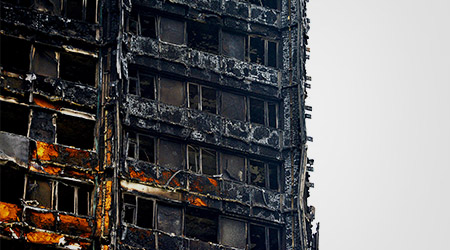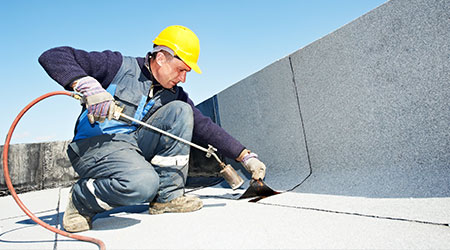
New Assessment Tool Helps Evaluate Fire Risk in High-Rise
February 15, 2018
Changes in wall cladding technologies used worldwide are altering the way large fires behave in high-rise buildings. In response to the risk, the National Fire Protection Association (NFPA) has created a free-to-access evaluation tool to help facility managers assess the fire risk in their existing high-rise facilities with combustible facades.
Large fires in high-rise buildings with combustible exterior wall assemblies have occurred in cities from Berlin to Las Vegas to Dubai to London. In these cases, the fire was able to run quickly up the side of the building instead of slowly progressing floor to floor. This exceeds the fire response capabilities of fire departments trying to respond to the fires.
The Exterior Facade Fire Evaluation Comparison Tool, or EFFECT, is based on research conducted by ARUP to develop a risk assessment methodology that enables the prioritization of mitigation work, says NFPA. This High-Rise Buildings with Combustible Exterior Wall Assemblies research takes into account the building envelope; potential ignition sources; building characteristics; and existing fire safety measures such as means of warning, containment, and extinguishment.
EFFECT takes into account the building, the facade, and the impact of potential ignition sources such as fire spreading from inside the building, or fire stemming from a vehicle, trash container, or balcony outside, says NFPA.
The risk assessment process happens in two stages. In the first stage, an online multiple choice questionnaire helps facility managers rank the high-rise buildings in their portfolio in terms of facade-related fire risk. Questions asked cover type of insulation and cladding on the facade, whether the facility has sprinklers, the kind of fire alarm system used, and the like.
Any facilities earning a high-risk score can then be more closely evaluated through onsite inspection, as-built information, maintenance records, samplings, and testing of unknown facade materials, says NFPA.
The tool can be used in any geographic area; and currently applies to residential (hotel, apartments) or business (office) type occupancies that are over 18 meters high.
This Quick Read was submitted by Naomi Millán, senior editor, Building Operating Management.
Next
Read next on FacilitiesNet












